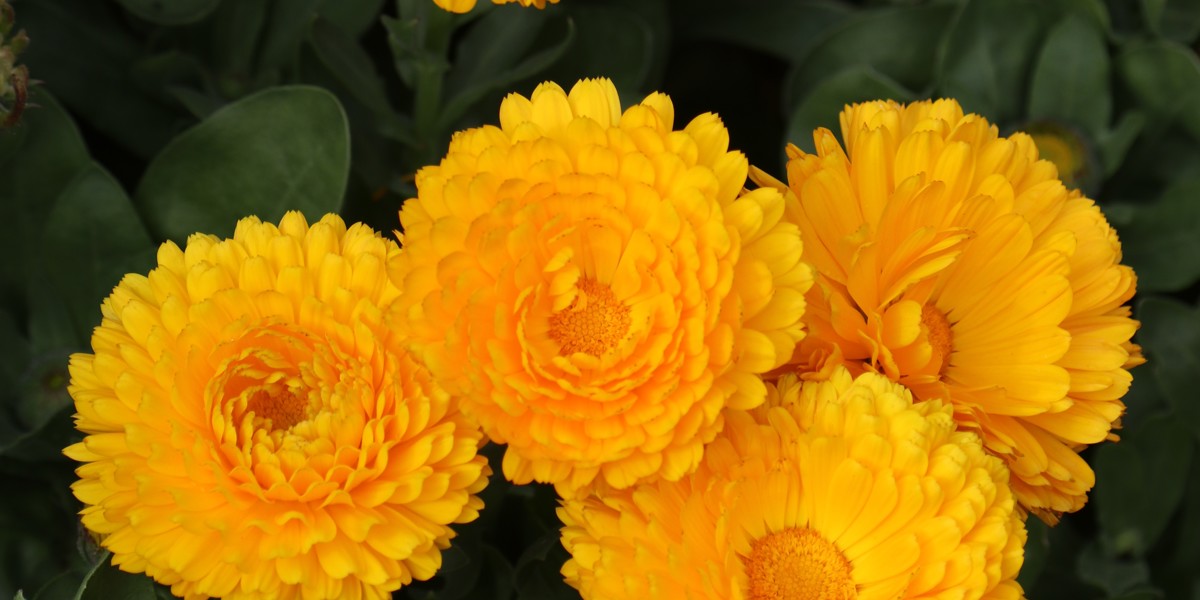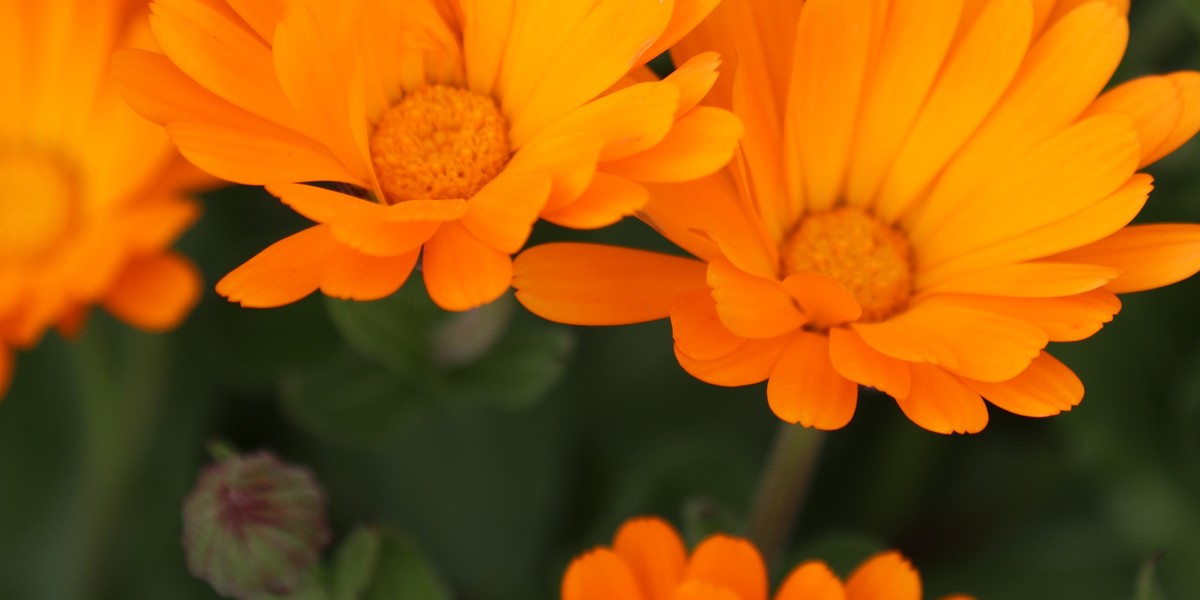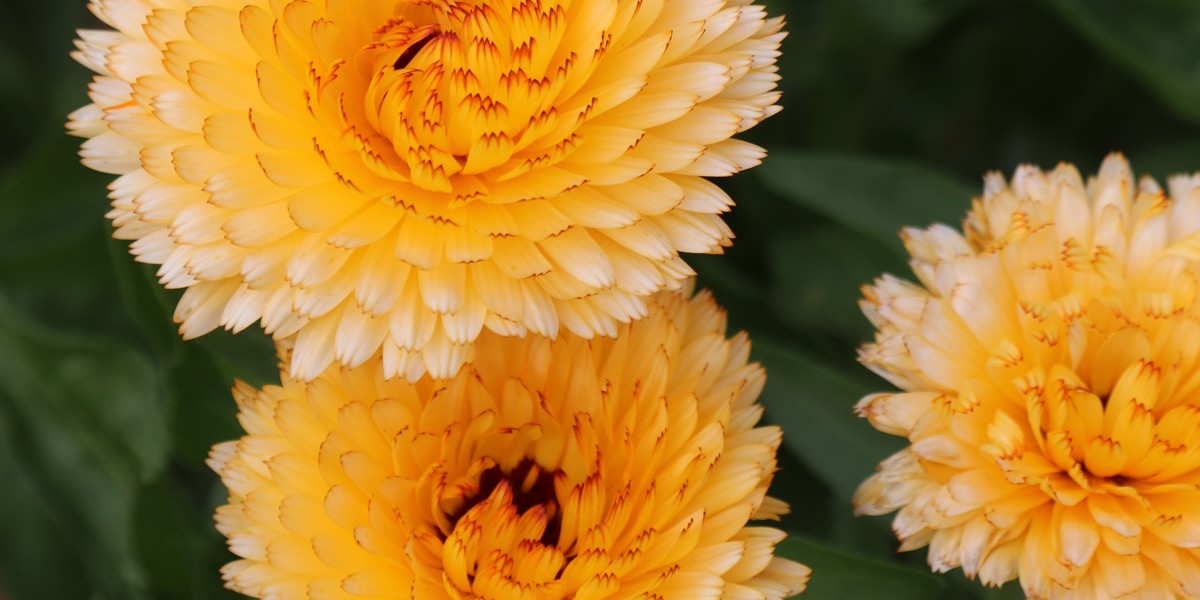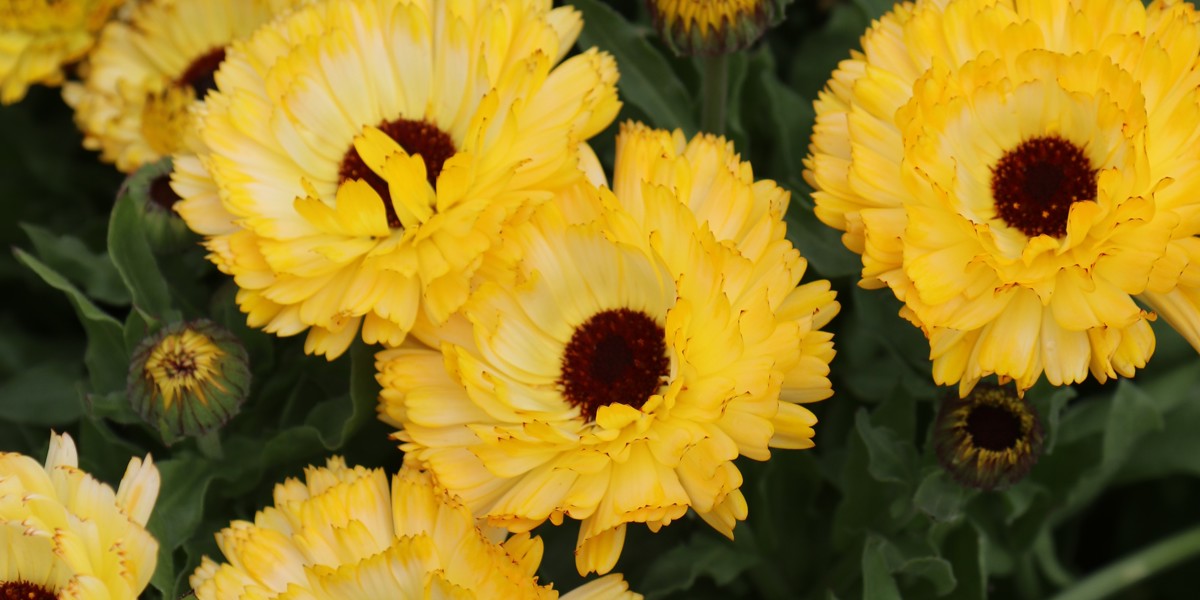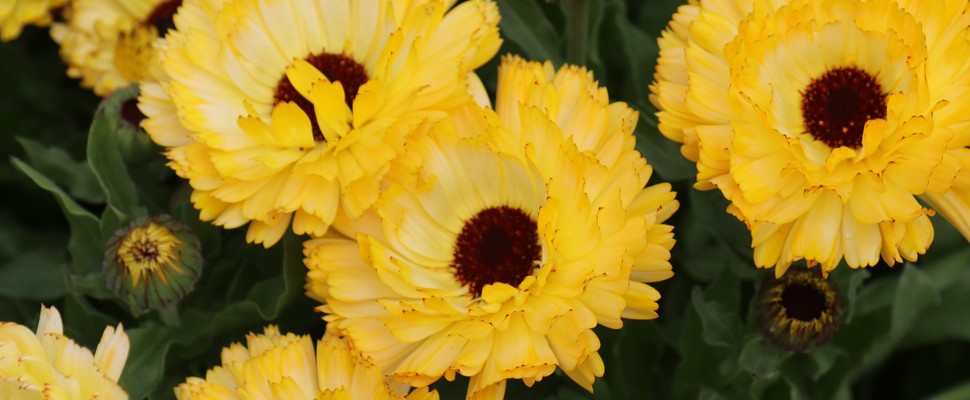
Calendula bedding trial
Winter bedding trial 2019
Introduction
Calendulas, or pot marigolds, belong to the daisy family Asteraceae (Compositae). There are 15–20 species of Calendula native to southwest Asia, western Europe, Macaronesia and the Mediterranean.
Calendula officinalis is the most commonly cultivated species. Variously named seed mixes are sold for their plant size, range of flower colours and double flowering. Some selections are popular annual garden plants as they self-seed and require little maintenance. They attract various pollinating insects into gardens, will grow in most soil conditions and prefer full sun.
At Auckland Botanic Gardens (ABG) we plant annual beds twice a year, unlike many other gardens which plant annual beds three times a year. We, therefore, require high performing annuals that have long flowering periods. These mass plantings are highly visible to the public, so it is important to assess plant performance through trials to select those best suited to ABG conditions.
High performing calendula for winter bedding is one that flowers profusely for 5–6 months, with flowers that do not fade or need deadheading, provides effective ground cover, has a 100% survival rate, is low maintenance and pest and disease resistant.
Methods
Seed of seven named calendula selections were sourced from Kings Seeds and Egmont Seeds. Open-pollinated seed of the species Calendula officinalis was collected from existing plants in ABG. These were sown on 12th March 2019 and planted in the trial garden on 15th April 2019. Each selection was represented by 10 plants. Compost and a general fertiliser were applied to the soil at the time of planting. Plants were deadheaded when planted. No watering was required throughout the trial.
Data was were collected to evaluate plant performance. Weekly flowering records were kept using a flowering scale (0 = nothing, 1 = buds, 2 = flowers, 3 = seed). Once a month, all plants were checked for pests and diseases, particularly powdery mildew and botrytis, and an average percentage of the plants affected in each selection was recorded. When fully mature (early August) the width and height of all plants was measured. Width (cm) was measured across the widest part of foliage and values averaged. Height (cm) was measured from soil level to the highest point on each plant and values averaged. An assessment of flower colour using the Royal Horticultural Society (RHS) colour charts was recorded for each selection. At the end of August, an evaluation by a group of staff was conducted to assess plants overall and rate them according to ABG star performer criteria (1 = poor performer to 10 = excellent performer). Cultivars that scored 8 or more are considered top performers and are recommended for Auckland conditions. The overall rating took into consideration flowering period, mix of colours, absence of pests and diseases, habit and vigour.
The trial concluded in mid-October 2019.
Results
In Table 1 we present the overall results of our Calendula trial. Only C. officinalis (as a species, not a cultivar) was free of any pests or diseases during the entire duration of the trial. In August, C. ‘Funky Stuff’ was showing 15% of the plant affected by powdery mildew which had increased by the end of the trial. All other named selections showed signs of powdery mildew and botrytis towards the end of the trial.
Table 1 Summary table of 7 Calendula trialled for flowering period, habit and size, pests and diseases and given an overall rating. Selections with an overall rating of 8 or higher are recommended as top performers and indicated by asterisks.
|
Name |
Flowering period and comments |
Habit and size (height × width of foliage in cm) |
Pest and disease |
Overall rating |
|
Calendula officinalis (open-pollinated; Fig. 1) |
Mid-June to mid-October. |
Loose and uneven habit. 57 × 85 |
No pests or diseases. |
8* |
|
C. ‘Candyman Orange and Yellow’ (Fig. 2) |
Mid-June to mid-October. |
Variable, dwarf and compact. 26 × 37 |
Botrytis (50%), powdery mildew (5%). |
5 |
|
C. ‘Daisy Faces’ (Fig. 3) |
Mid-June to late October. |
Very dwarf and tight habit (probably bred for pots rather than garden). 21 × 35 |
Botrytis (50%), powdery mildew (5%). |
4 |
|
C. ‘Dwarf Colours Mixed’ (Fig. 4) |
Mid-June to early October. |
Compact and very dwarf habit. 25 × 39 |
Botrytis (5%). |
6 |
|
C. ‘Funky Stuff’ (Fig. 5) |
Mid-June to mid-October. Flowers are uniform. |
Variable to floppy, lax in habit. 54 × 56 |
Botrytis (5%), powdery mildew (80%). |
4 |
|
C. ‘Ivory Princess’ (Fig. 6) |
Mid-June to late October. |
Variable habit. 54 × 65 |
Botrytis (5%), powdery mildew (10%). |
6 |
|
C. ‘Kablouna Mixed’ (Fig. 7) |
Mid-June to mid-October. |
Variable habit. 48 × 69 |
Botrytis (10%), powdery mildew (75%). |
6 |
As with many other annual crops, commercial imperatives have determined that plant breeding is focussed on developing compact plants that flower when relatively young, often to the detriment of garden performance. The Calendula selections/seed-lines that we trialled with tight compact habits were prone to fungal disease, presumably due to reduced air circulation through the plants, whereas the tall open C. officinalis plants were relatively disease-free.
The flowering period for all selections started at a similar time, in mid-June. After a month of continuous rain in August the flowers on all plants were rotting. By mid-September, most were covered in older flowers, some of which were rotting on the plant rather than dropping off, and only C. ‘Ivory Princess’ and C. ‘Kablouna Mixed’ still had flower buds.
The colour palette of flowers was very similar across all selections which were compared using the RHS colour charts (Table 2).
Table 2 Flower colour using RHS colour chart.
|
Name |
Flower description |
RHS colour chart |
|
Calendula officinalis (open-pollinated) |
3 colours, single flowers. |
1) orange group N25B; 2) yellow orange group 17A; 3) yellow orange group 23A. |
|
C. ‘Candyman Orange and Yellow’ |
2 colours in mix, double flowers. |
1) orange group 28A; 2) yellow group 9A. |
|
C. ‘Daisy Faces’ |
3 colours in mix, single flowers. |
1) orange group N25B; 2) two tone yellow orange group 22A and orange group N25B; 3) two tone yellow group 11B and yellow group 9A. |
|
C. ‘Dwarf Colours Mixed’ |
2 colours in mix, double flowers. |
1) orange group N23A; 2) yellow orange group 14A. |
|
C. ‘Funky Stuff’ |
1 colour, semi double flowers. |
1) orange group N25B. |
|
C. ‘Ivory Princess’ |
2 colours in mix, semi double flowers. |
1) yellow group 5D; 2) yellow group 12C (much darker yellow on back of tips yellow orange group 14A). |
|
C. ‘Kablouna Mixed’ |
5 colours in mix, semi-double flowers. |
1) yellow orange group 19A; 2) yellow group 5D; 3) orange group N25A; 4) yellow orange group 17A; 5) yellow orange 16B. |
Conclusions
Only open-pollinated Calendula officinalis met our evaluation criteria. However, at ABG this species will only be included in our Edible and Herb Gardens because its loose and open habit would not be effective in mass plantings. No other calendula selections that we trialled are considered suitable for annual bedding situations at ABG because of their rotting flowers, uneven habit and susceptibility to mildew and botrytis. In the process of breeding for desirable plant habit and flower traits, the more derived selections appear to have lost some of the hardiness and disease resistance found in the more typical wild form of the species.
Websites (accessed November 2019)
Flora of China: Calendula: www.efloras.org/florataxon.aspx?flora_id=2&taxon_id=105062
POD Gardening: Calendula: www.podgardening.co.nz/calendula.html
The Plant List: Calendula: www.theplantlist.org/tpl1.1/search?q=Calendula
Wikipedia: Calendula: https://en.wikipedia.org/wiki/Calendula
This article cannot be republished elsewhere without written consent from Auckland Botanic Gardens.
